MENU
MENU
Tea production area: Uji City, Ujitawara Town, Yawata City, Kyotanabe City, Kumiyama Town, Joyo City, Ide Town, Kizugawa City, Wazuka Town, Kasagi Town, Minamiyamashiro Town
Brand name of tea: Uji tea, Uji Tahara tea, Wazuka tea, Uji gyokuro, Tanabe gyokuro, Ryotan gyokuro, Ryotan tea, Ayabe tea, Kyo-bancha
Types of tea: Matcha, tencha, sencha (medium steamed green tea), fukamushicha (deep steamed green tea), kukicha (stem tea), hojicha (roasted green tea), genmaicha (popped rice green tea), gyokuro (high quality shaded tea), kabusecha (shaded green tea), black tea, bancha, powdered tea, oolong eta, flavored tea, etc.
Tea History of Kyoto
Japanese tea industry began in Uji, Kyoto. Many temples, historical buildings and facilities located in Kyoto Prefecture are related to tea. In Kyoto, one can have matcha and matcha sweets, and also experience Japanese tea.
Tea garden at Toganoosan Kosan-ji temple (栂尾山高山寺)
Eisai Zenji (栄西禅師) (1141-1215), founder of Japan’s Rinzai Sect went to Song (China) twice to learn Zen. It is said that he brought back tea seeds to Japan from Song in 1911 and gave some of them to Myoe Shonin (明恵上人) (1173-1232), a Buddhist monk of Toganoo, Kyoto. Tradition says that Myoe planted the seeds there. The seeds produced new seeds which were sent to Uji, Yamato (Nara Prefecture), Ise (Mie Prefecture), Suruga (the central eastern part of Shizuoka Prefecture) and Musahi (Saitama Prefecture and its surrounding area) with “Chajuttoku (茶十徳). Chajuttoku is the ten virtues of tea written by Myoe.
Presently there is a tea garden in Toganoosan Kosanji-temple. “The oldest tea garden in Japan” is engraved on a stone monument which stands in front of the tea garden.
*There are 4 more tea gardens in other places which are believed to be the oldest tea gardens in Japan.
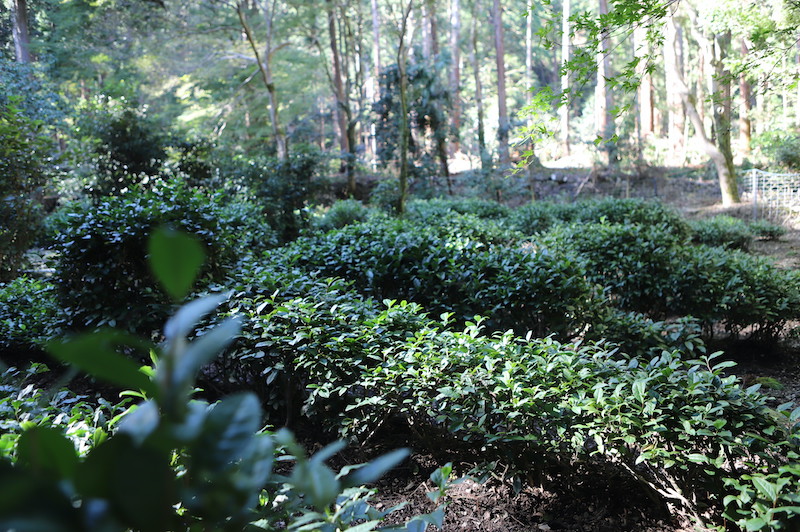
栂尾山高山寺の茶園(2018年10月)
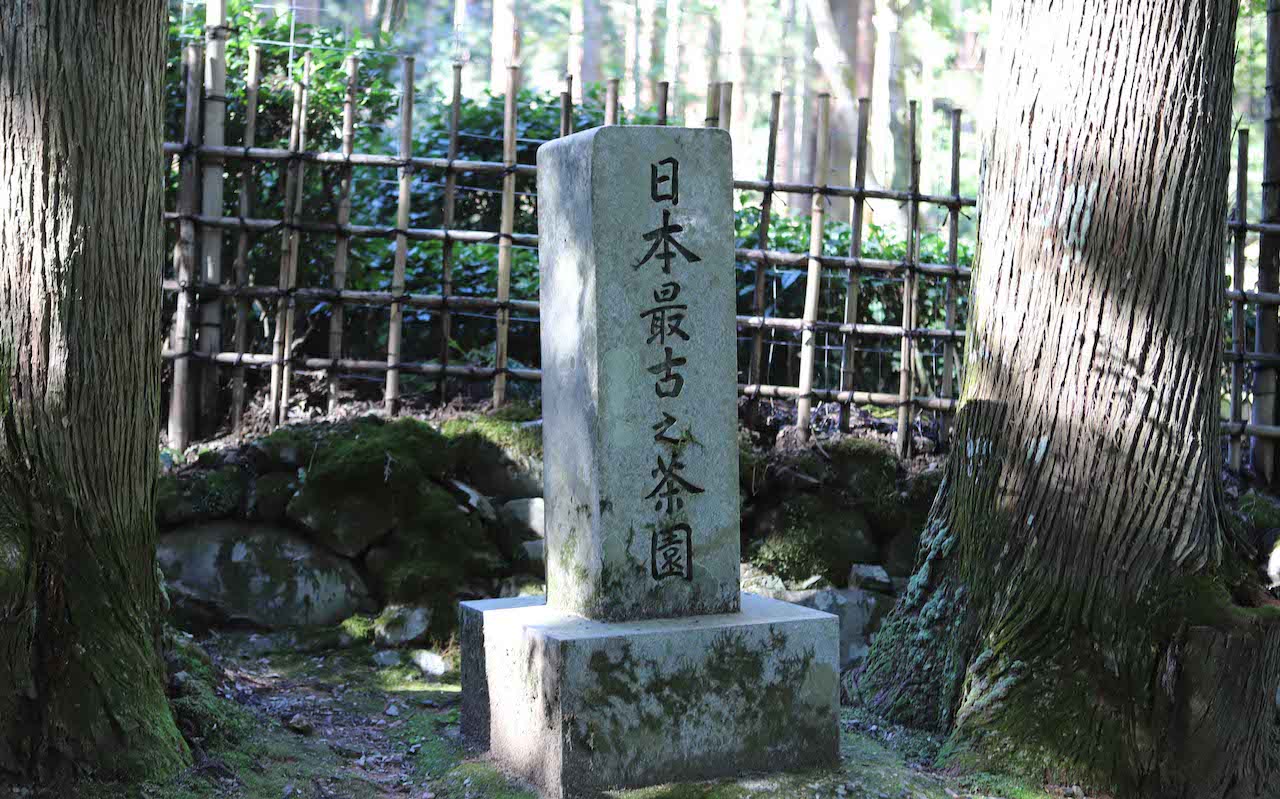
栂尾山高山寺(2018年10月)
Uji Matcha
Uji matcha is famous in Japan.
Drinking tea by the “Matcha Method” was popular in Song (China) when Eisai stayed there. The “Matcha Method” was hot water added to powdered tea ground with a millstone or druggist’s mortar. Esai introduced the “Matcha Method” to Japan.
It is believed that Myoe’s tea seeds were planted in Uji. Tea cultivation and matcha production of Uji has flourished because of a good climate there for tea cultivation.

Matcha and Japanese confectionary at a shop of Kanbayashi shunsho honten (May 2019)
Matcha is made by grinding tencha (碾茶) with a stone mill to make it into a fine powder. Tea fields of tencha are covered with man-made black mats to block sunlight for around 2 to 3 weeks prior to the tea leaves plucking. When the sunlight is blocked, catechins (bitterness components) are suppressed and amino acids (umami components) increase.
Sencha (煎茶 steamed green tea) invented by NAGATANI Soen
In the Edo Period, NAGATANI Soen (1681-1778), an accomplished farmer of Ujitawara invented the “Aosei Sencha method (青製煎茶製法)”. In this method, tea leaves are steamed and rubbed and dried by hand on a hoiro (ほい炉), a wooden drier for tea leaves. Prior to that, the color of brewed tea produced by boiled or roasted tea leaves with a pan was dark brown. On the other hand, the color of brewed tea using the new method became bluish green.
This is the house where Soen was born in Ujitawara Town. The house was reconstructed in 1960. Inside, the remnants of the hoiro used by Soen are preserved.
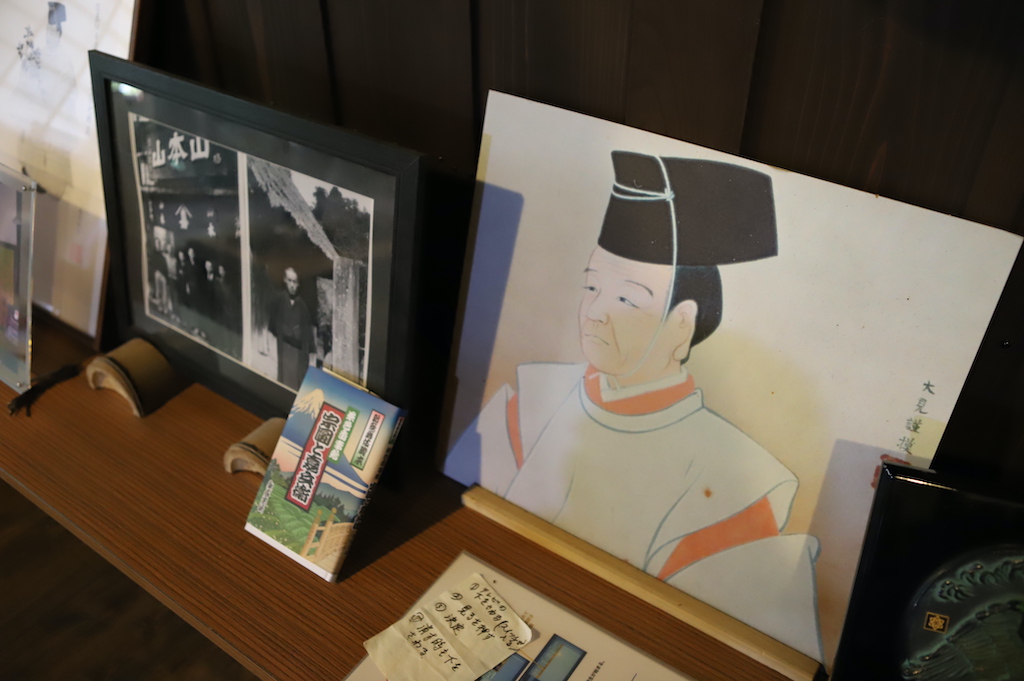
A portrait painter of Soen at the house where Soen was born (October 2018)
Until the “Aosei Sencha Seiho” was developed, good tea was made using the matcha method, and only the privileged classes could drink it. After its invention, Sencha became widely consumed by common people.
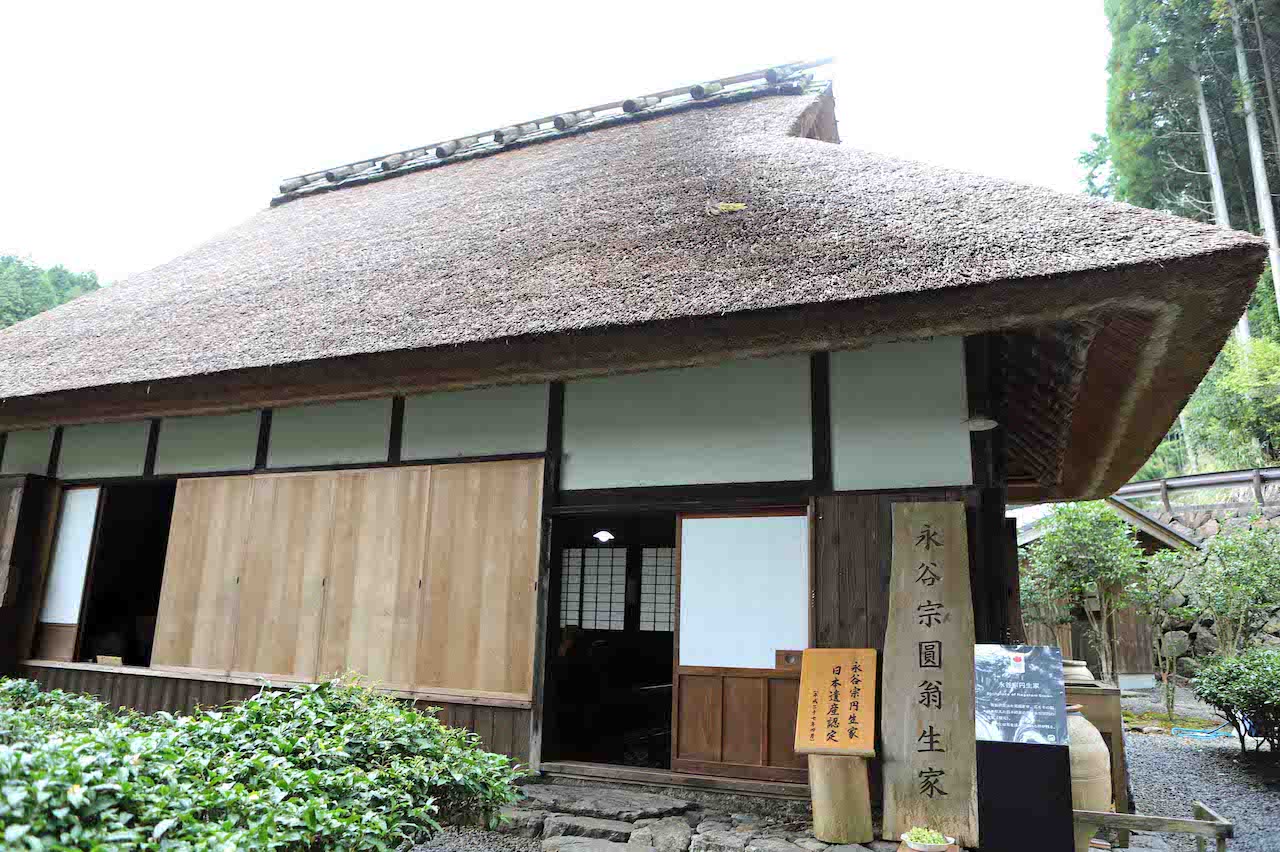
The house was recognized as a Japan Heritage (October 2018)
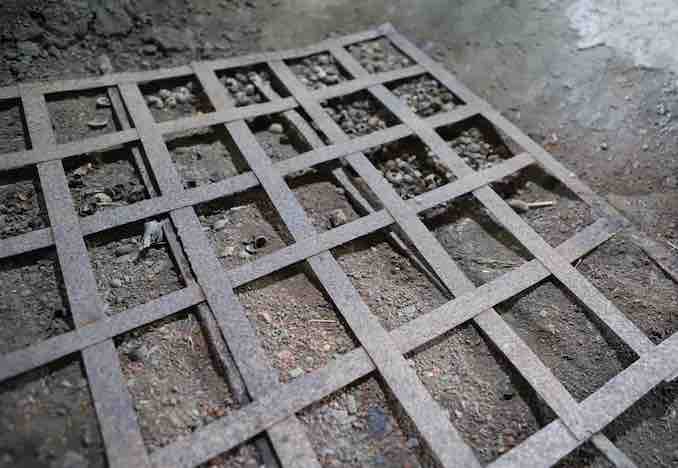
The remain of Soen’s hoiro at the house where Soen was born (October 2018)
Gyokuro (玉露)
Gyokuro is a high quality green tea and its method of cultivation is the same as that of tencha (碾茶). Uji-gyokuro is one of three major gyokuro production places in Japan. The two others are Fujieda, Shizuoka Prefecture and Yame, Fukuoka Prefecture.
There are a few opinions on the origin of gyokuro. One is that of YAMAMOTO Kahei, a tea seller who developed gyokuro in Uji in 1835 during the Edo Period.
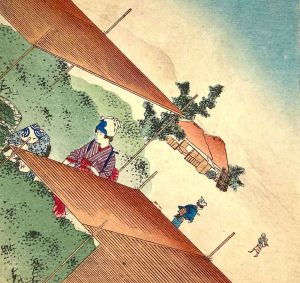
Wood‐block print of covered tea fields
In Uji, gyokuro tea gardens are covered with Yoshizu which is woven from Yoshi (reed) or man-made black mats for about 2 to 3 weeks prior to plucking tea leaves. Only new buds are picked by hand for high quality gyokuro. The tea leaves of gyokuro are very soft. Thus, after brewing gyokuro, the used tea leaves can be eaten with soy sauce (醤油) or ponzu sauce (ポン酢).
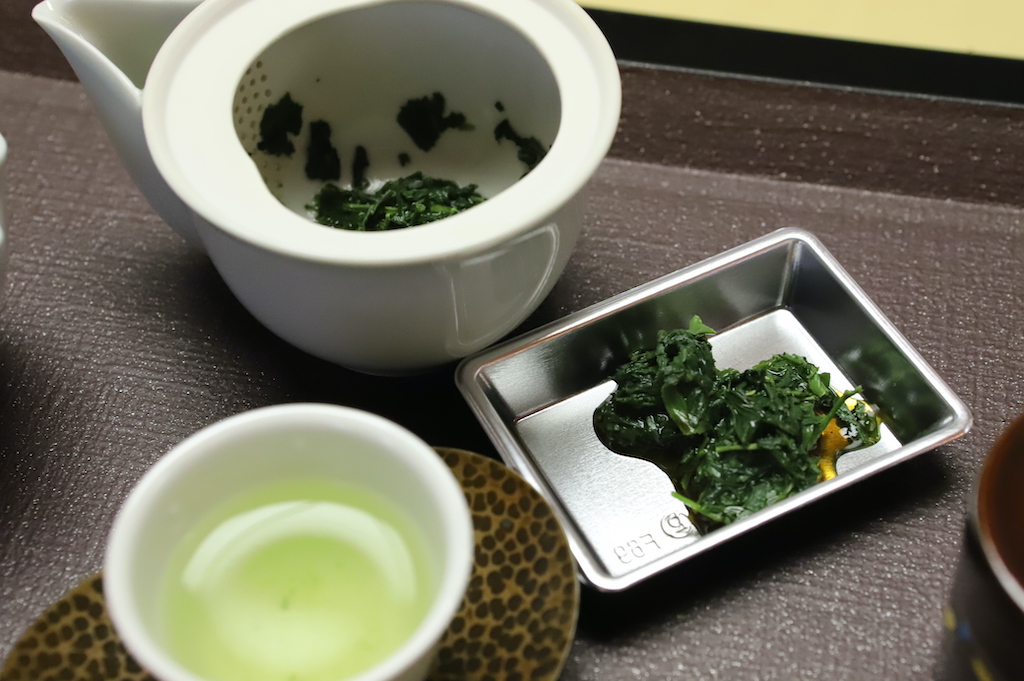
Uji Gyokuro and used tea leaves with ponzu at Fukujuen CHA-yugaku park (October, 2018)
Kyo bancha 京番茶
Kyo bancha is a local bancha in Kyoto. Remaining tea leaves are plucked in the tea garden after plucking the new buds for tencha or gyokuro. Tea leaves were formerly roasted in a pan and then dried, but now tea leaves are steamed, roasted and dried. Kyo bancha has a unique sour roasted flavor.
Bancha (番茶・晩茶) has a few meanings such as coarse tea and local tea.
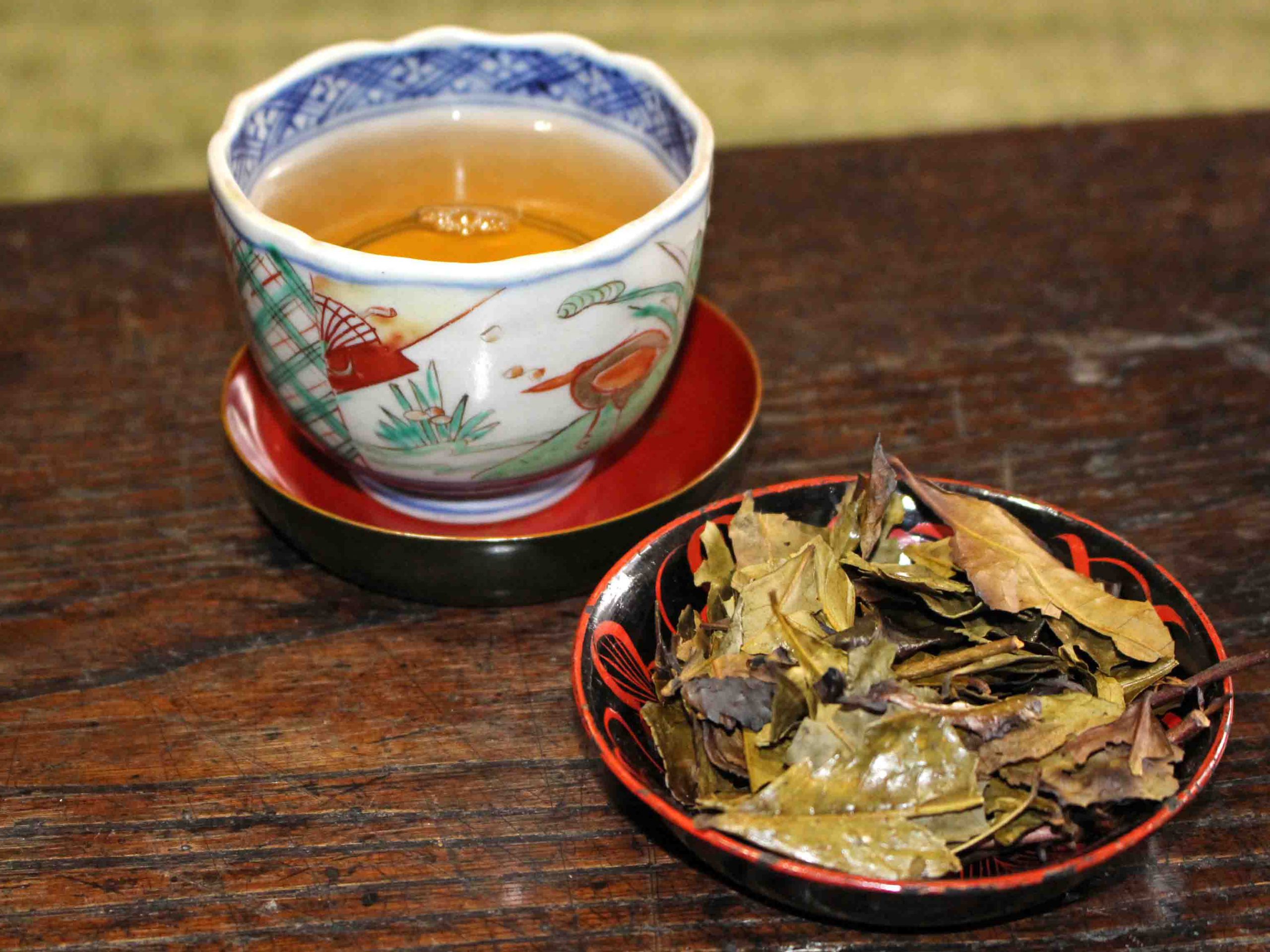
Kyobancha
“A Walk through the 800-year History of Japanese Tea”, Japan Heritage
The scenery of the tea fields and the tea culture in Yamashiro Region (Uji City, Joyo City, Kyotanabe City, Ujitahara Town, Kizugawa City, Wazuka Town and Minami Yamashiro Town) have been recognized as a Japan Heritage.
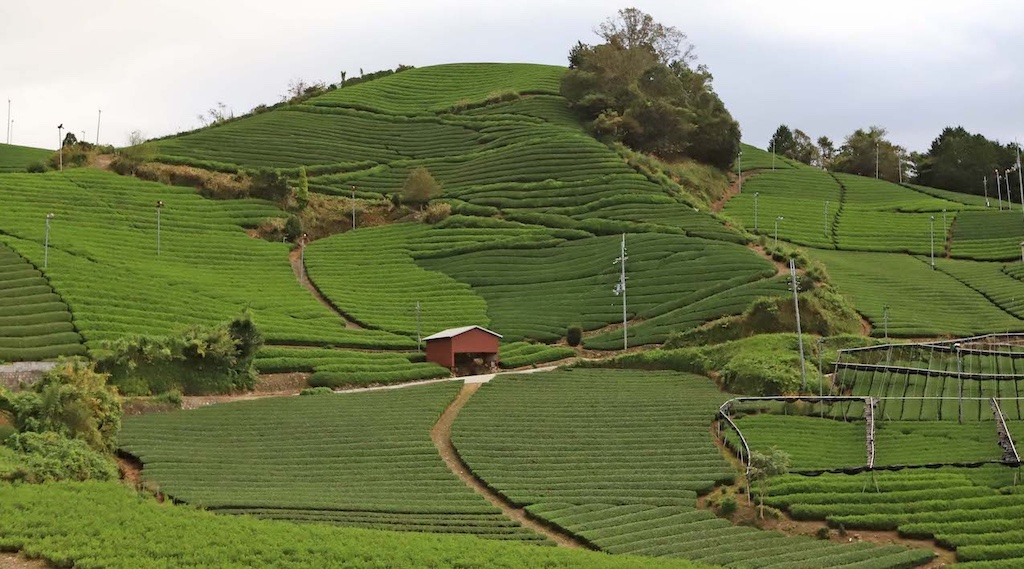
“Ishidera no chabatake” (石寺の茶畑 Tea fields of Stone temple) which was recognized a Japan heritage in Wazuka Town, (October 2018)
Ingen Zenji (隠元禅師) and Fucha (普茶) Cuisine
In 1661 the Obakusan Manpuku-ji Temple in Uji City was founded by Ingen Zenji (1592-1673), a Chinese Buddhist monk. He is the founder of the Obaku school of Zen Buddhism in Japan. He introduced the Fucha cuisine which is a Chinese-style vegetarian cuisine from China. Fucha means to serve tea with the general public. Fucha cuisine can be eaten for lunch at the Obakusan Manpuku-ji Temple (advance reservation is necessary).
Also brought to Japan by Ingen Zenji was Shideidaichakan (紫泥大茶罐) which is the origin of kyusu (急須 Japanese tea pot).
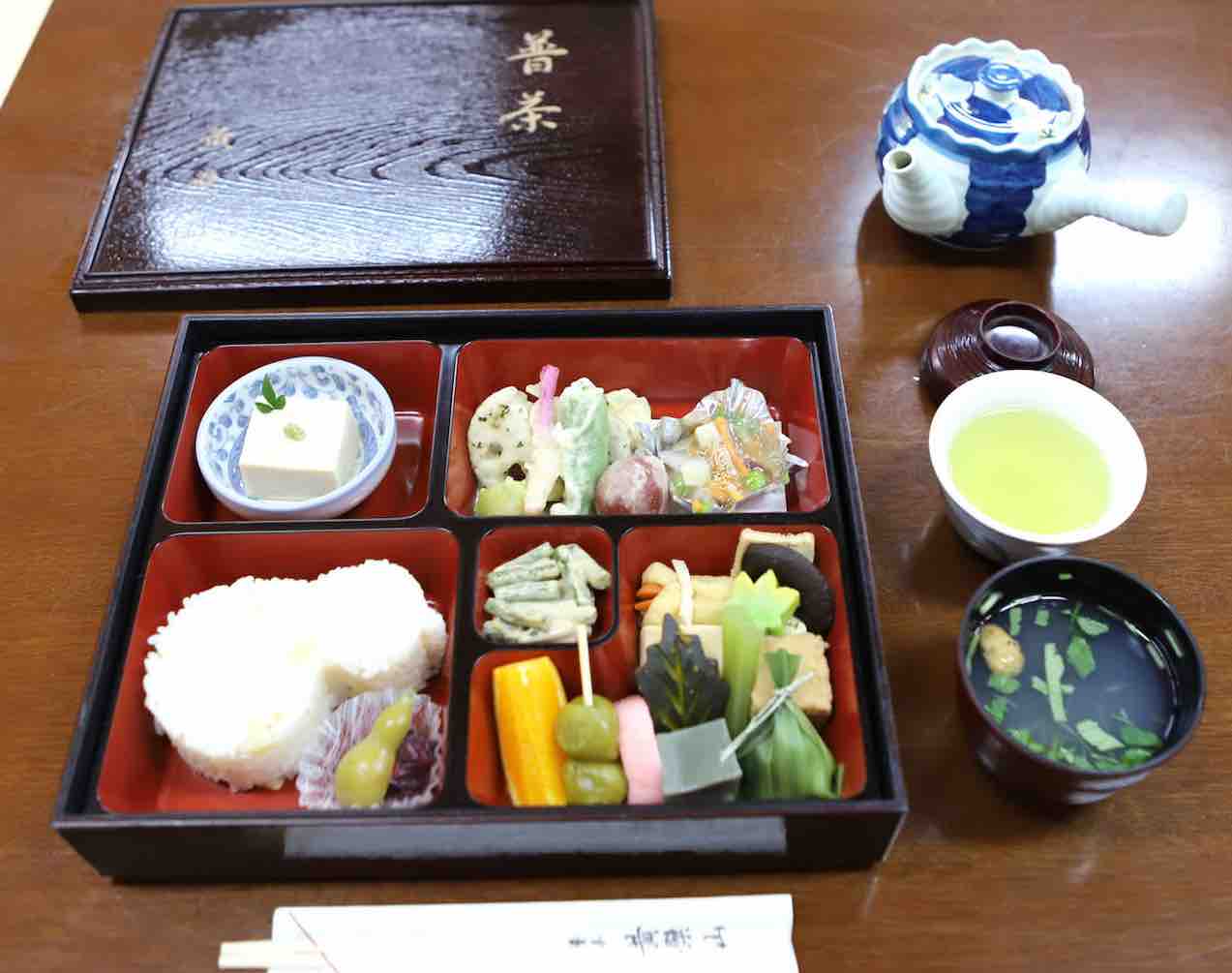
Fucha cuisine box (普茶弁当) at Obakusan Manpuku-ji Temple (May 2019)
Tea tourism
Tea tourism can be fully enjoyed in Kyoto Prefecture. There are tea themed B&Bs and hotels such as the Kyoto Wazukasou in Wazuka Town. Tea fields also surround the hotel. Dinner is served there using the Wazuka tea and a hot bath with tea is also provided.

Dinner using tea and tea beer “CHABEER” at Wazukaso (October 2018)
Fukujuen CHA Yugaku Park
In the tea museum Fukujuen CHA Yugaku Park you can learn about and experience tea. In this park there is a tea shop, a tea garden and also a traditional Japanese tearoom. The museum is operated by the Fukujuen tea company.
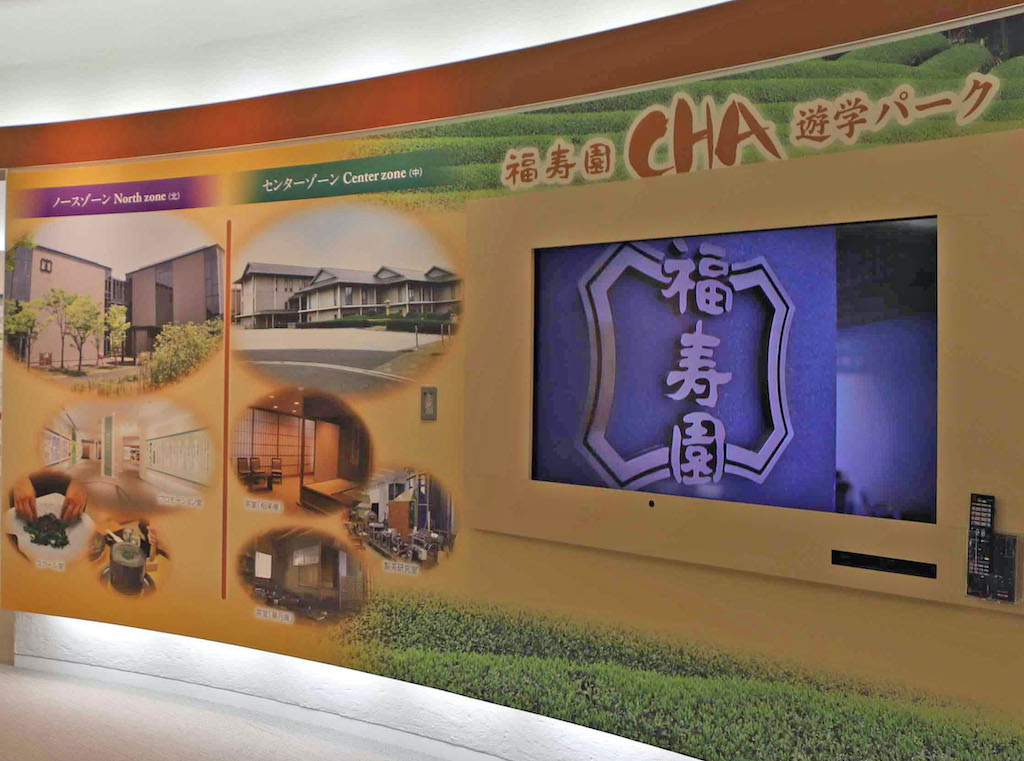
Fukujuen CHA Yugaku Park (October 2018)
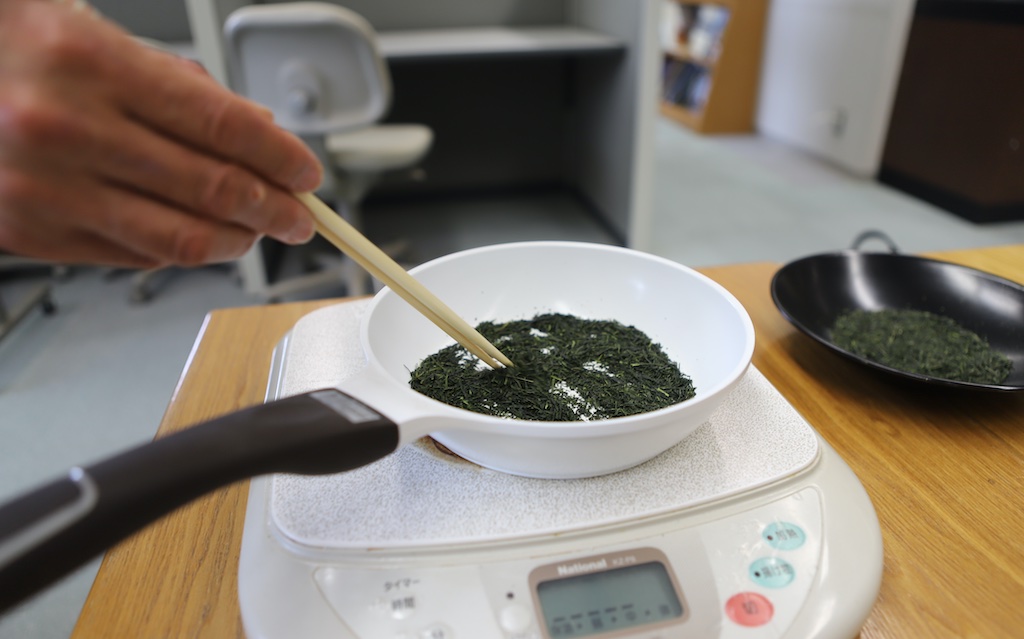
福寿園CHA遊学パーク ほうじ茶作り体験(2018年10月)
Uji Kanbayashi Kinenkan (宇治・上林記念館)
During the Edo Period, the Kanbayashi family were tea masters who served as purveyors of tea for the Tokugawa shogunate, their families and many Daimyo (Japanese feudal lords). Uji Kanbayashi Kinenkan is a memorial house where old tea processing tools used by the Kanbayashi family, historical documents and materials related to tea and the family are exhibited. It is located next to the Kanbayashi Shunsho honten shop where tea products can be purchased and matcha and Japanese confectionaries can be enjoyed.
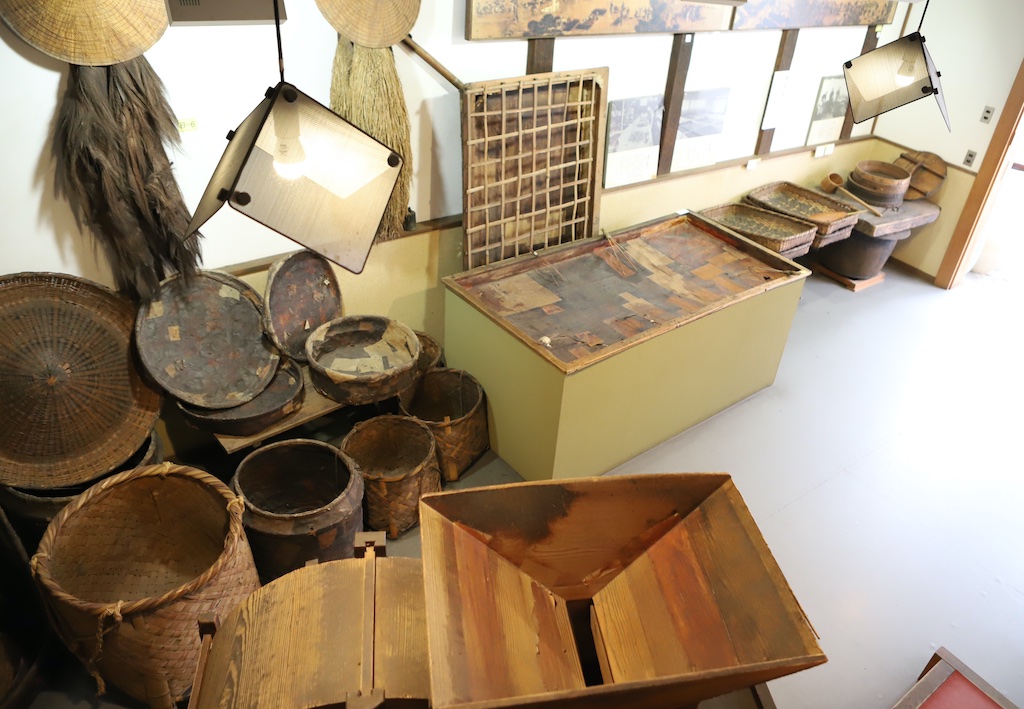
Old tea processing tools at Uji Kanbayashi kinenkan (May 2019)
Ochatsubodochu (お茶壺道中 Ochatsubo dochu procession)
The Ochatsubo dochu was a procession in which tea was carried to Edo (Tokyo) from Uji for the Tokugawa Shogunate. Ochatsubo means “jar for keeping tea” and dochu means “procession”.
It is said that Ochatsubo dochu started in 1613 during the Edo Period. At the beginning of the Ochatsubo dochu only several people carried ochatsubo. However, ochatsubo dochu became a huge parade between the end of the 17 century and the beginning of the 18 century and was abolished in 1866.

Ochatsubo and carrier which are exhibited at Uji Kanbayashi kinenkan (May 2019
Various food with Uji matcha
In Uji City, various foods can be enjoyed that use matcha such as breads, croquettes, noodles, etc.
Mogmog Bakery makes various bread using Uji matcha. Products may change depending on the season
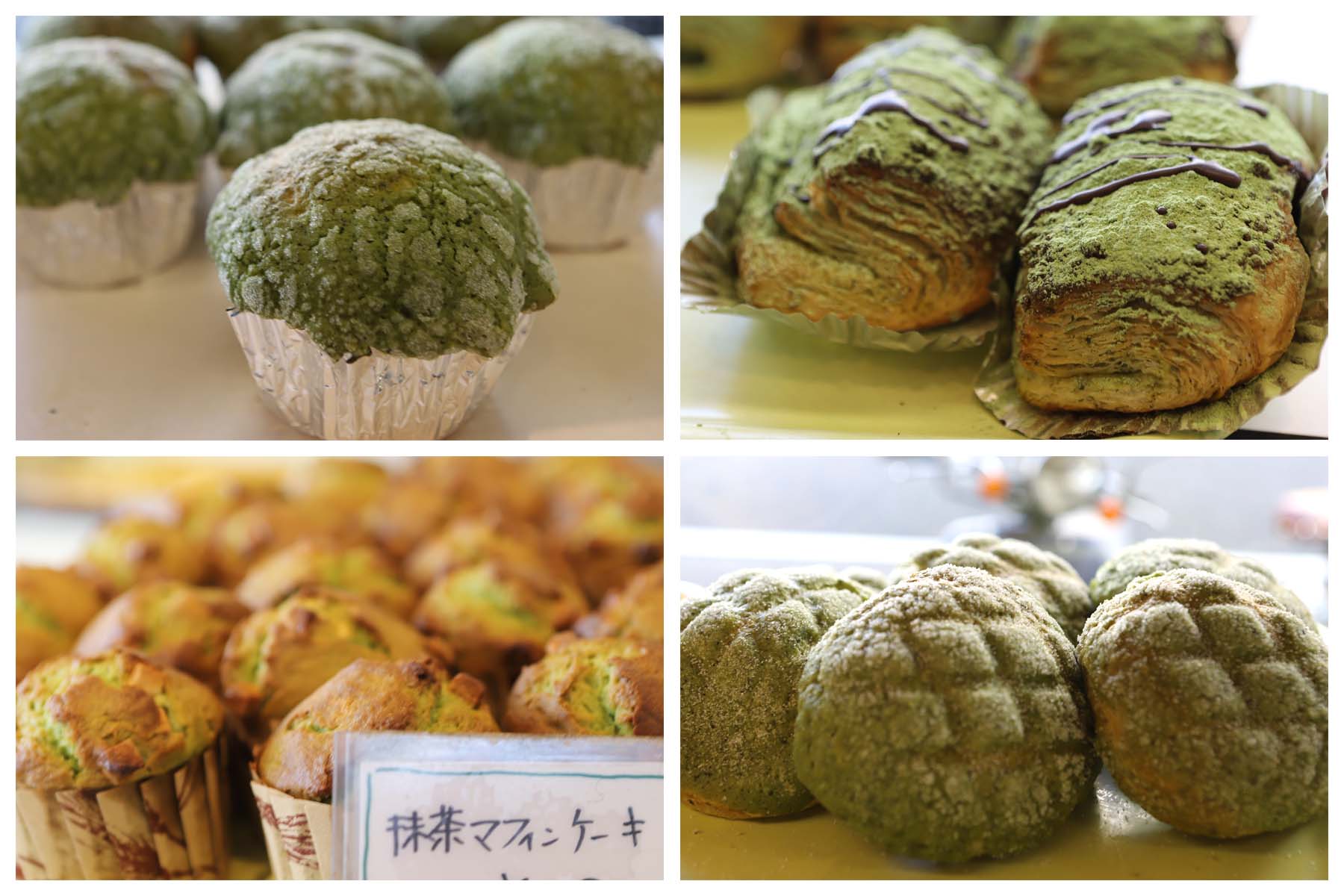
Mogmog Bakery (May 2019)
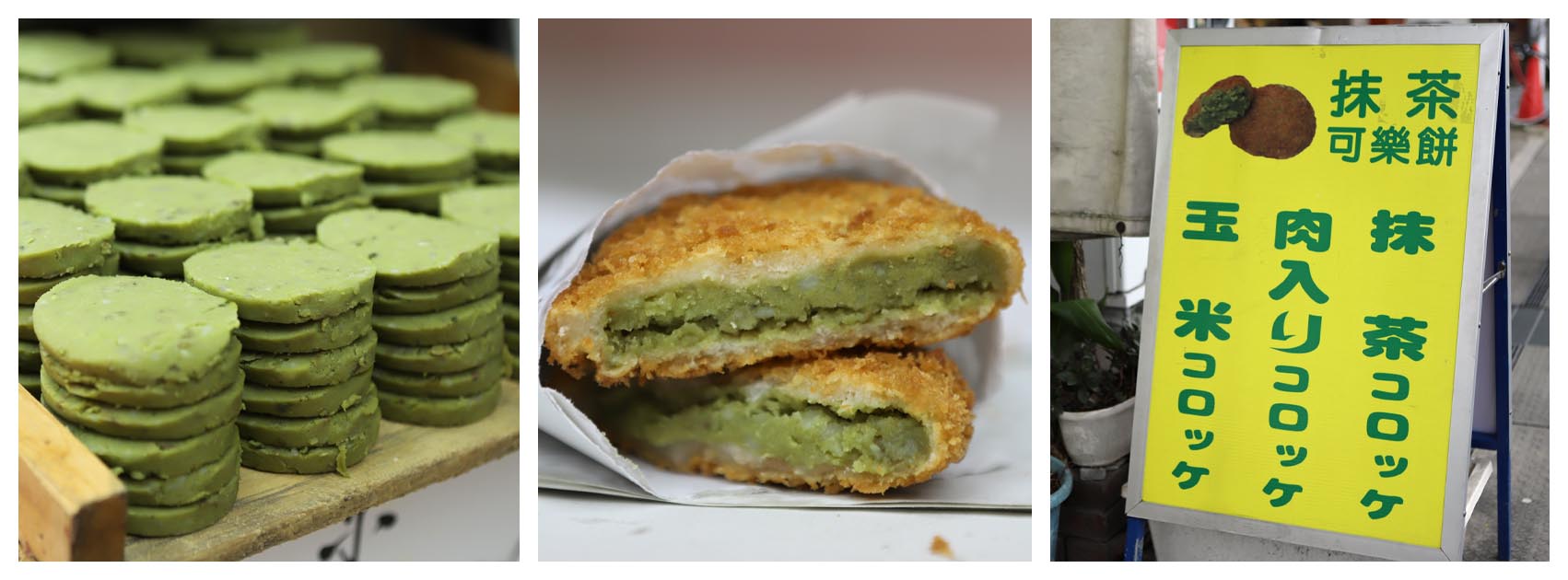
Uji matcha croquette made by Meat shop Hariyoshi (May 2019)
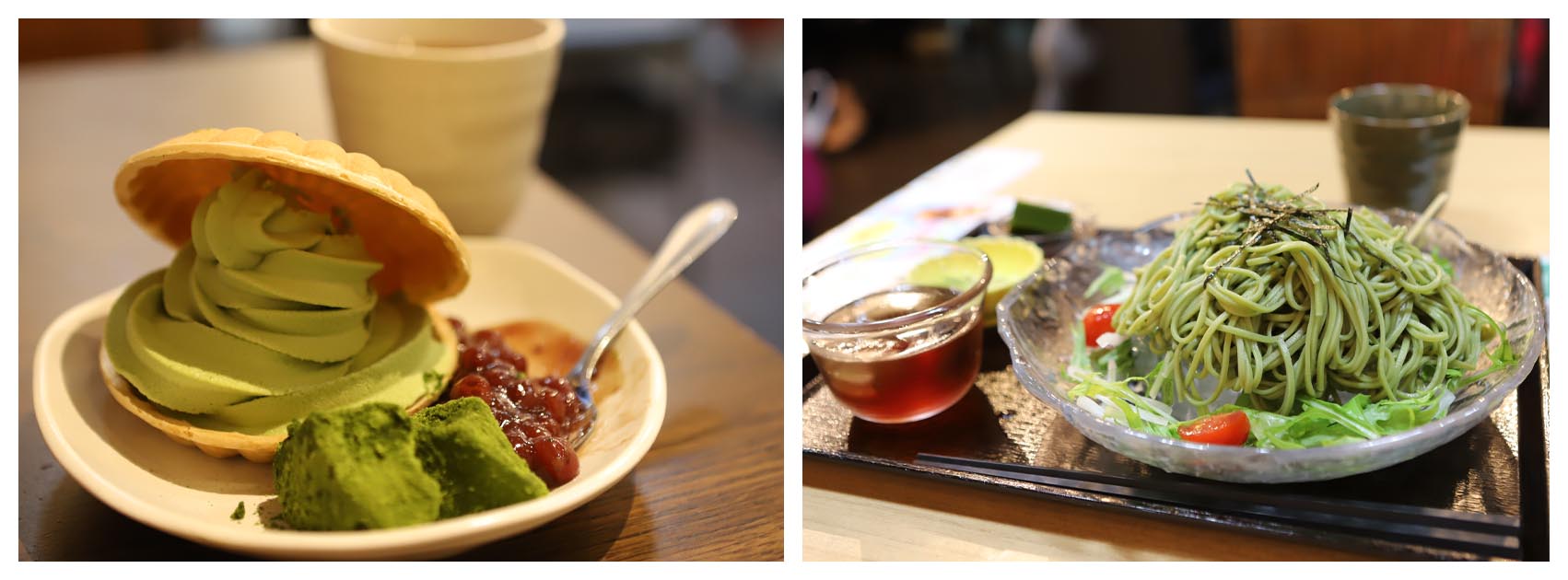
Soft ice cream and noodles using organic Uji matcha at Chaganju café (May 2019)
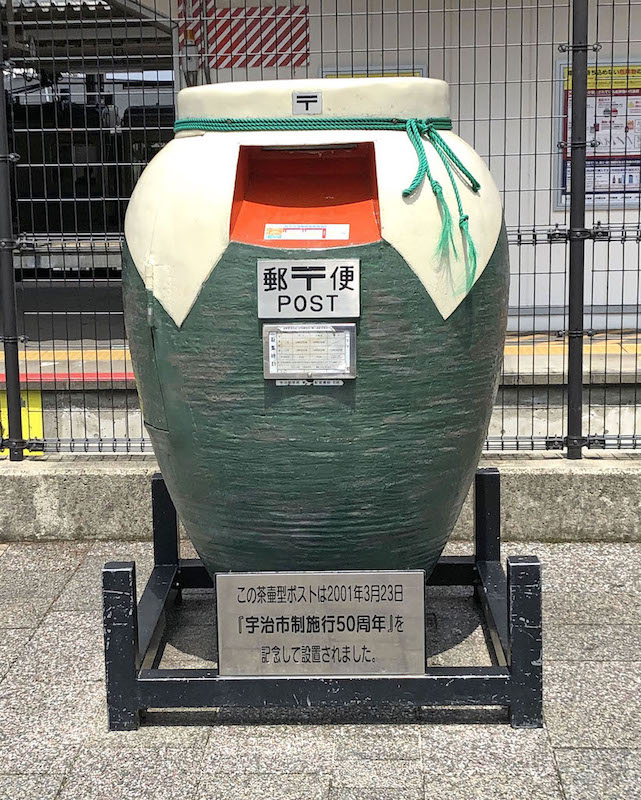
Chatsubo post at the JR Uji Station (May 2019) Chatsubo is a jar for keeping tea
Related article on the site:
Tea related facilities:
栂尾山高山寺 https://kosanji.com
永谷宗円生家 https://ujitawara-kyoto.com/sightseeing/scenery/nagatanisouenseika/
黄檗宗萬福寺 https://www.obakusan.or.jp
福寿園 CHA遊学パークhttps://cha.fukujuen.com
上林春松本店 https://www.shunsho.co.jp
京都和束荘 https://wazukaso.com
茶願寿邸 https://www.chaganjutei.com
茶願寿 Cafe https://chaganju-cafe.owst.jp
mogmog Bakery(モグモグベーカリー) https://www.mogmog-b.com
宗円交遊庵やんたん http://www.town.ujitawara.kyoto.jp/0000001928.html
石寺の茶畑 https://wazukanko.com/event/石寺の茶畑/
Tea mascot Yuru-Chara:
チャチャ王国おうじちゃま Chacha okoku oujichama (Uji City)
茶ッピー Chappi (Ujitawara Town)
茶茶ちゃん Chacha chan (Wazuka Town)
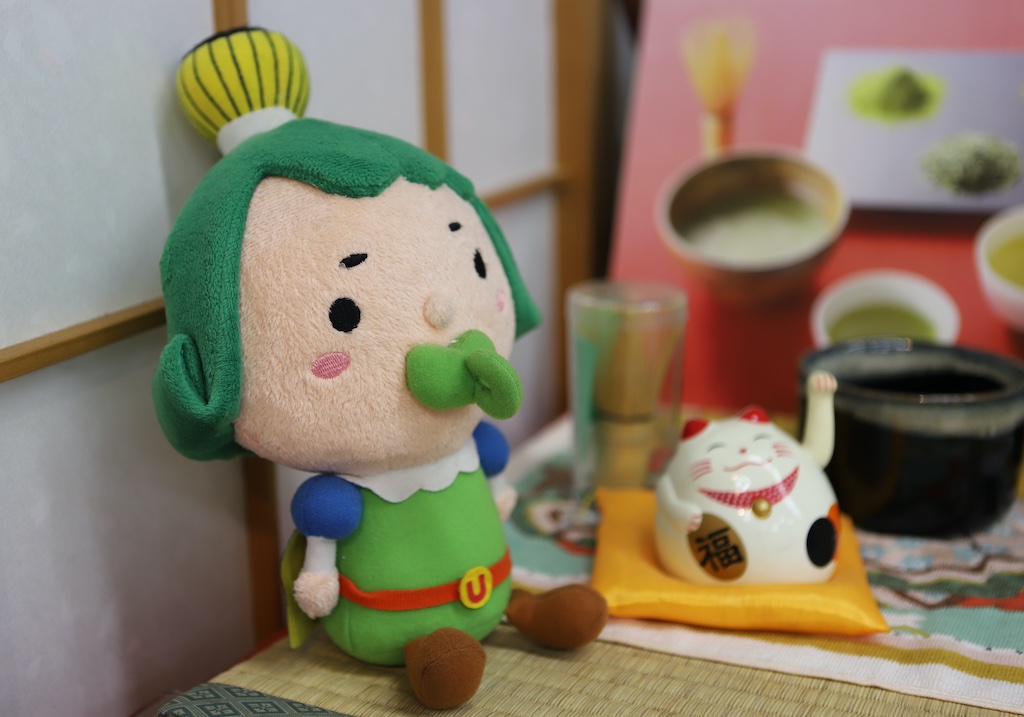
Chacha oukoku Ojichama, Tea mascot Your of Uji, at Chaganju Cafe (May 2019)
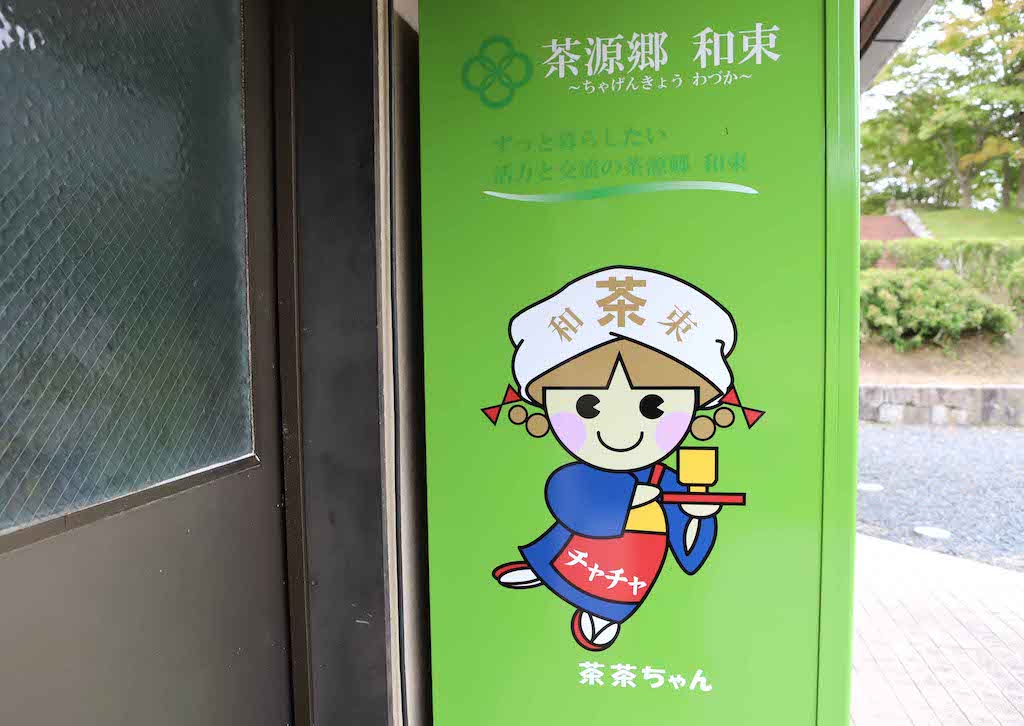
A vending machine with an illustration of Chacha chan in Wazuka Town (October 2018)
Ceramic and pottery art: Kyo ware, Shimizu ware, Raku ware, Asahi ware
Reference:
松下智 (平成3年) 日本名茶紀行 (初版) 雄山閣出版
松下智 緑茶の世界ー日本茶と中国茶 雄山閣
高野實・谷本陽蔵・富田勲・中川致之・岩浅潔・寺本益英・山田新市 (2005) 緑茶の事典 (改訂3版) 柴田書店
工藤佳治主編者(2007) 中国茶事典(初版) 勉誠出版
梶ようこ (2019) お茶壺道中 (KADOKAWA)
世界文化社 (2011年) 茶の湯 便利手帳③茶の湯基本用語集 (初版) 世界文化社
大森正司、阿南豊正、伊勢村護、加藤みゆき、滝口明子、中村羊一郎編(2017) 茶の事典 初版第一刷 朝倉書店
上林春松本店 https://www.shunsho.co.jp
宇治・上林記念館 https://www.shunsho.co.jp/facilities/#facilities04Sec
栂尾山高山寺(京都市)http://www.kosanji.com
福寿園 CHA遊学パークhttps://cha.fukujuen.com
京都和束荘(京都府相楽郡和束町)http://wazukaso.com
宗円交遊庵やんたん http://www.sk-yantan.com
日本遺産ポータルサイト https://japan-heritage.bunka.go.jp/
日本茶800年の歴史散歩 https://japan-heritage.bunka.go.jp/ja/stories/story009/
*When visiting the shops and facilities introduced in this article, please check the business hours on their website, etc. before visiting.
*The information provided on this site may be updated. If you find any information in this article that is incorrect, new, or incomplete, please contact CHAMART.
*The site does not describe all “Teas of Japan” or all “Teas of the World”. Additionally, each article expresses the writer’s personal experience and feelings.
#Ujitea #Japanesetea #Kyoto #Sencha